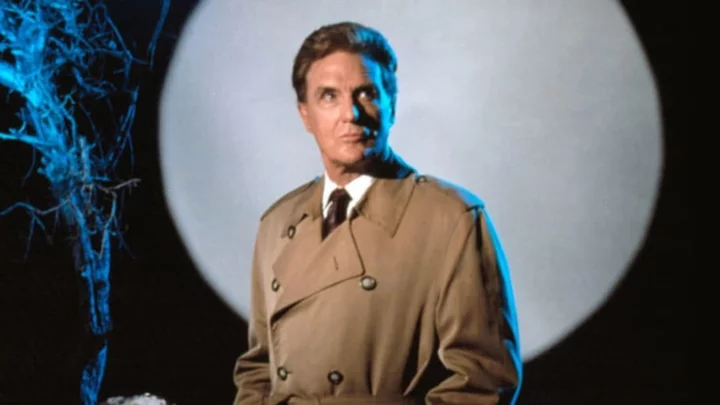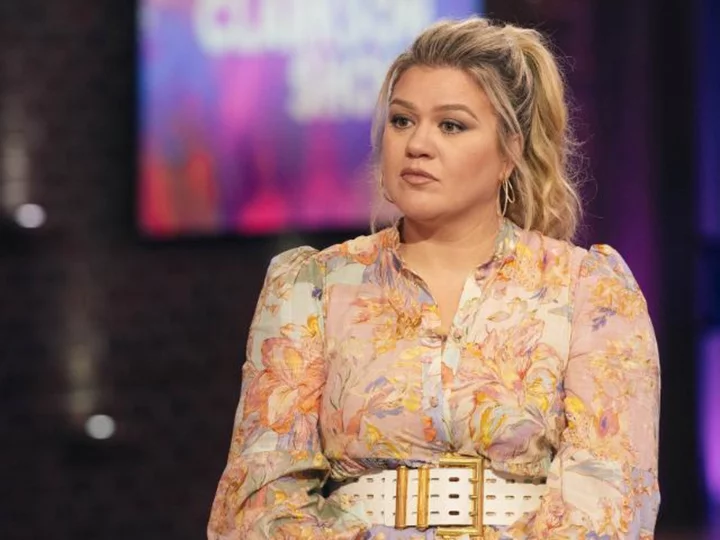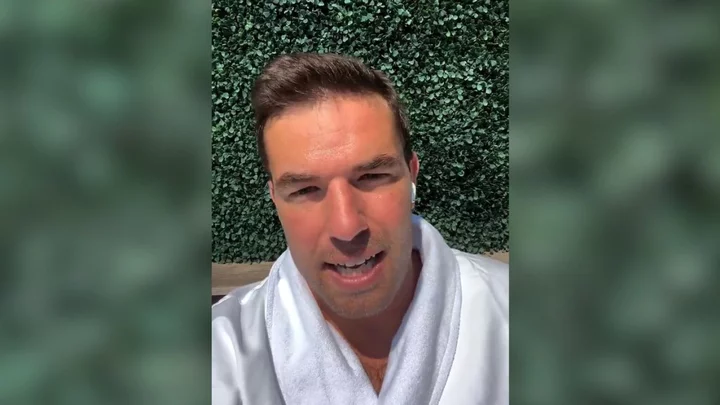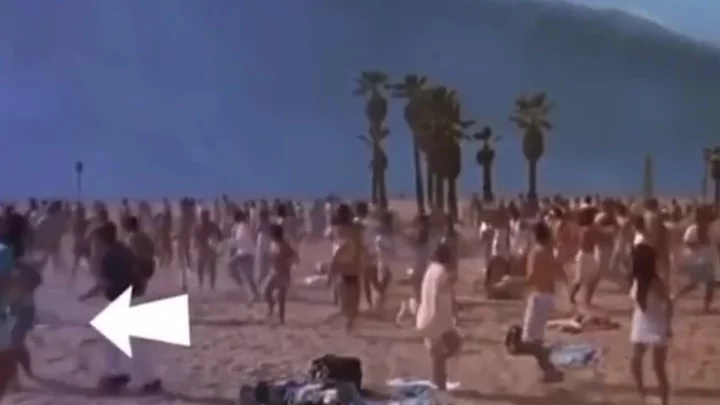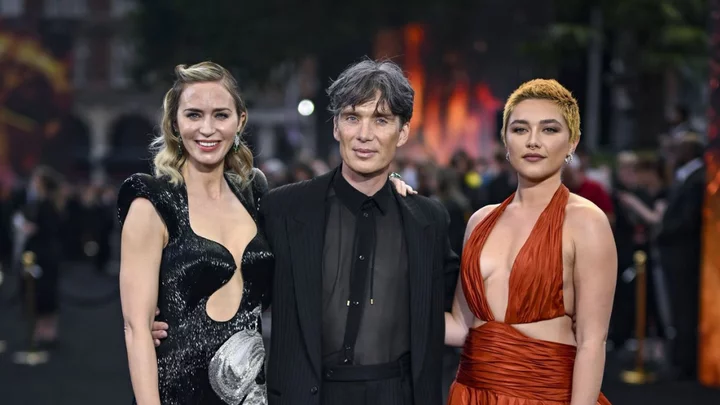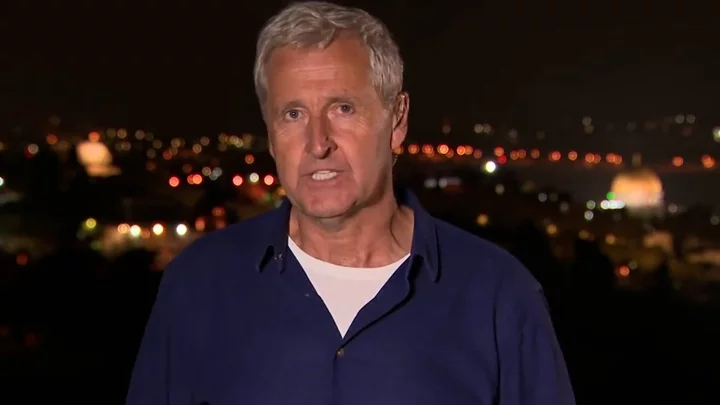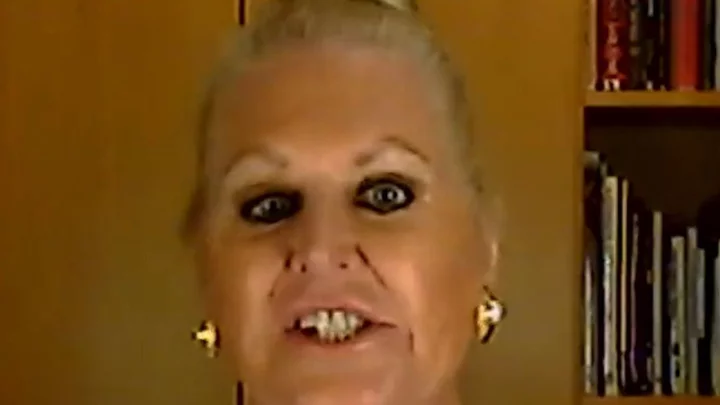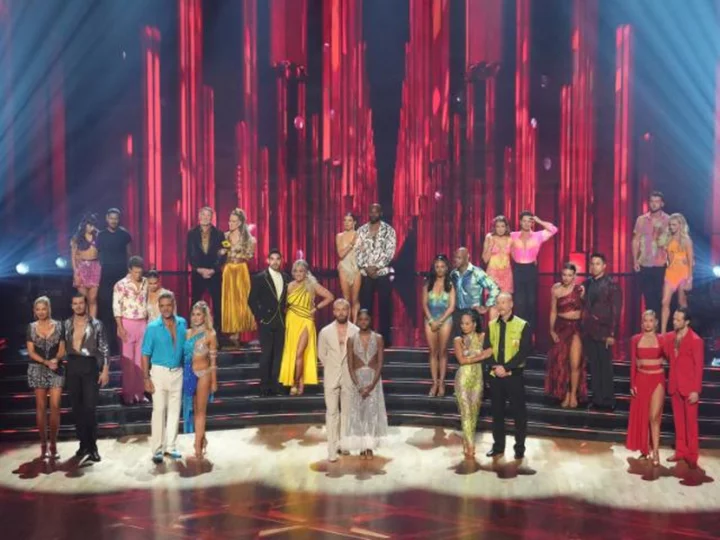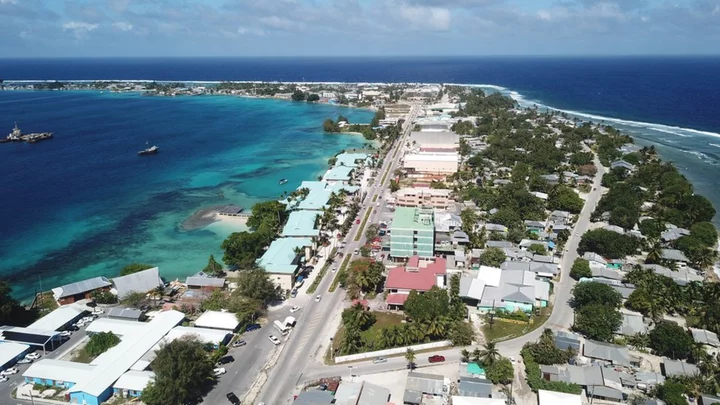Join me. Perhaps you will learn some things you didn’t know about the wonderfully spooky Unsolved Mysteries, the classic crime series that recently got a reboot courtesy of Stranger Things executive producer Shawn Levy. The show celebrates its 35th anniversary this year; here’s what you should know.
1. Unsolved Mysteries started as a series of specials.
The three specials, called Missing… Have You Seen This Person?, were hosted by David Birney and his wife Meredith Baxter and aired on NBC in April 1986. The specials were so successful that producers Terry Dunn Meurer and John Cosgrove decided to broaden the scope of the show to include all kinds of mysteries.
2. The show wasn’t always hosted by Robert Stack.
When what would become the pilot episode of Unsolved Mysteries (but was then just a special) debuted on January 20, 1987, it was hosted by Raymond Burr. Karl Malden helmed the next two specials, and then Stack took over hosting duties, narrating the next few specials and the weekly episodes until the show went off the air in 2002. Later, when the show was revived, Dennis Farina took over hosting duties. (Stack had passed away in 2003; Farina died 10 years later.)
3. In early episodes, Unsolved Mysteries didn’t use actors in the reenactments.
According to director David Vassar, who directed 100 segments of the show, “In the early episodes, if there were any reenactments, we actually had the real people play themselves.” That’s why, he said in DVD commentary, “the acting of these first seasons when we were just getting our feet wet was not up to snuff. As we went through the seasons we were able to pay top dollar and get good people, so it just got better and better.”
4. There’s an easy way to tell if the actors were bad.
“This is an Unsolved Mysteries hallmark, and it’s a secret,” Vassar said in DVD commentary, “but if the narrator talks a lot, and the actors don’t talk at all, it means the acting is really pretty bad, and the narrator is going to cover everything up. If there’s everything out in the clear between the actors, it means the actors were usually pretty good. So the game was, how many seconds of the sync sound takes could you get to play in the open? The more sync you got to play in the open, the better the scene. Pretty simple.”
5. The reenactments weren’t the most important component of Unsolved Mysteries.
“The interviews were so important to the way Unsolved Mysteries was produced,” Cosgrove said. “People would think that the most important thing was the recreations, but really, having articulate people who can summon up the emotions of what it felt like [was key].”
“You trusted the interviews,” added director Keva Rosenfeld. “If you didn’t have that, you didn’t have a good episode.”
6. The show’s director came from documentary filmmaking.
“We were all used to real life,” Vassar said, “and in the first couple of seasons, it shows. Only occasionally had we worked with actors, and if we did, we worked with actors as hosts because they were hosting a documentary we were making.” In the beginning seasons, the show shot with a small crew, too: “On the first season, it was basically director, a director of photography, an assistant photographer, a sound man, a producer, and lighting or grip guy,” Vassar said. “There were five or six of us, trying to make these little movies. It was like silent films in the 1900s. We did everything ourselves.”
7. Unsolved Mysteries was cheap to make.
In the early ‘90s, an hourlong scripted drama cost about $1.5 million per episode. Cosgrove told The Baltimore Sun that Unsolved Mysteries could be made for 25 to 40 percent of that cost. “If you're the president of NBC Entertainment, which show are you going to buy?” the Sun asked. “The one that costs $375,000 to make and finishes 11th in overall ratings or the one that costs $1.5 million to make and finishes 40th?”
8. Stack compared Unsolved Mysteries to theater.
“We’re balancing two needs here,” Stack told the Los Angeles Times in 1990. “We’re trying to produce theater and we’re trying to do a public service.”
Stack’s stage comparisons didn’t end there: He saw his duty as host, according to Cosgrove, as akin to the stage manager of Our Town. The three-act play, written by Thornton Wilder, takes place in the small town of Grover’s Corners and features stories from a period between the years of 1901 and 1913. The stage manager served as the narrator.
9. The show’s four-segment format was designed to attract viewers.
The show’s segments covered a number of themes, including Murder, Missing Persons, Wanted Fugitives, UFOs, Ghosts, The Unexplained (Paranormal), Missing Heirs, Amnesia, Fraud, and more. Each show consisted of four segments, plus an update on an older case. “Almost every show has an unexplained death in it, and almost every show has a lost love story,” Meurer told the Los Angeles Times. “Then we’ll mix and match in there a legend or a gold mine, or we’ll put in one of our UFO stories.”
“The idea,” Cosgrove said in DVD commentary, “was to have four different segments in four different areas so people would find something that they liked.”
10. The spooky theme music was composed by Gary Malkin.
Unsolved Mysteries’s original, goosebump-inducing theme was written by Gary Malkin, who also served as the show’s main composer. “One of the things that really worked was the music,” Cosgrove said. “I had a lot of friends whose kids would run out the room because the music scared them so much.” Producer Raymond Bridgers agreed: “The music was so distinctive that you didn’t even have to be in the room to know that Unsolved Mysteries was on,” he said.
The theme was updated several times (you can hear the 1995 version here), and when the show was revived in 2008, it came back with a new theme (and new logo) altogether. The 2020 Netflix reboot brought back the original theme and somehow made it spookier.
11. Malkin described the theme as “not high art.”
In a 2020 interview with the LA Times, Malkin recalled that “We used to get letters all the time from parents saying, ‘Could you please change the theme music? Our children are terrified of it.‘‘’ The composer started the theme by writing the repeating notes on the piano and adding bass, but things came together when he went into the studio with his writing partner Michael Boyd and added synthesizer elements with the help of synthesist Charles Judge. According to Malkin, Judge “brought it all to life” with pitch bends: “He took the pitch bender and hit the notes in such a creepy way. It was like the way the color white has all the colors of the rainbow.”
Malkin said the theme was “not high art, but I think that’s why it worked. It’s very simple building blocks with really great sounds.”
12. Unsolved Mysteries pulled in great ratings.
In 1990, Unsolved Mysteries ranked No. 11 for all TV series that year. “Once a sleeper, the reality series hosted by Robert Stack, former star of The Untouchables, now is just a flat-out smash,” the Los Angeles Times wrote two years later. “In the last four weeks, for instance, the unshowy but rock-solid series has demonstrated its clout—ranking 3rd, 16th, 8th and 10th in the ratings.”
13. It was nominated for six Emmy Awards.
The category was the Outstanding Informational Series, and Unsolved Mysteries was nominated in 1989, 1990, 1991, 1992, 1993, and 1995. Unfortunately, the show didn’t win, losing out to PBS’s Nature (1989), Smithsonian World (1990), The Civil War (1991), TNT’s MGM: When the Lion Roars (1992), PBS’s Healing and the Mind with Bill Moyers (1993), and PBS’s Baseball and NBC’s TV Nation (1995).
14. Producers have some ideas about why the show was so successful.
Number one, of course, was Robert Stack, whose poker-faced delivery could send chills up anyone’s spine. “Bob’s contributions were immense, really impossible to calculate,” Cosgrove said in a tribute to the actor after Stack’s death in 2003. “His fame and charisma helped attract an audience.” Said Bridges: “No one could deliver a spooky line like Robert Stack.”
Number two: Curiosity. “People are fascinated by the idea that they might be living next door to one of these people, and might be able to help find them,” Meurer told the LA Times in 1990.
And number three: “One of the things that attracted people to the show,” Cosgrove said, was that “they wanted to be scared.”
15. Thanks to Jack the Ripper, there was an Unsolved Mysteries Halloween special.
In its first year on the air, Unsolved Mysteries had a Halloween special—an entire hour devoted to ghosts. “Bob was pretty skeptical at this point about doing an entire hour about ghosts,” Cosgrove said on DVD commentary. “He definitely, I don’t think, thought it was a great idea for us to change the formula of having four segments of different categories for this Halloween special. It was a little risky doing an hour on one topic.”
NBC had asked the producers to create a one hour special, Cosgrove said, because the network “had gotten wind that there was going to be a Jack the Ripper special in syndication, one of those live event specials, that revealed the secret identity of Jack the Ripper at the end of the show. And they said, ‘We want you to come up with a stunt program on Halloween.’ But we said, ‘Wait, we’re the people producing the Jack the Ripper special—we don’t want to do that!’ And they said ‘We don’t care!’ So we came up with this, which clobbered the Jack the Ripper special.”
After this, though, the show would occasionally do single-topic episodes. One season 7 episode, for example, saw the show take on psychic phenomena, while another analyzed psychopaths.
16. The show once blew up a church.
The segment “Lucky Choir” tells the story of a choir that met to practice every Wednesday night at 7:25 p.m. Except one night, when every choir member was late—and, as a result, avoided an explosion at 7:27 p.m. that surely would have killed them. The producers chose a church in Unadilla, Nebraska, that was slated for demolition, and planned an explosion. They flew a special effects expert to the site and surrounded the church with five cameras framed by plywood boxes that would protect the gear and the cameramen. “We were supposed to cave in the roof, and we framed [the shot] slightly above the roof,” Rosenfeld, who directed the segment, recalled. “[The special effects guy] blew it up way bigger than we expected. A fireball went into the air, probably a quarter mile. We were all scared.”
Shrapnel speared the plywood boxes around the cameras and their operators, and debris rained down for 20 minutes. “The cameraman walked up to the macho special effects guy, pretty angry, and said ‘What did you put in there?’ And this macho guy goes, ‘Ninety-five sticks of dynamite and three 10-gallon tubs of gasoline,’” Rosenfeld remembers. “We immediately rushed the site to film the scene because we couldn’t recreate that. We knew we weren’t doing that again.”
17. A number of stars got their breaks on Unsolved Mysteries.
In his first professional acting gig, Matthew McConaughey appeared as a (shirtless, of course) murder victim in an episode of Unsolved Mysteries. “They got the guy,” the Academy Award winner told Entertainment Weekly in 2014. “They found him around Bryan, Texas, about two weeks after that show.” Virginia Madsen also co-hosted the show with Stack in 1999. Curb Your Enthusiasm’s Cheryl Hines, MADtv’s Stephnie Weir, Saw’s Ned Bellamy, and Lost’s Daniel Dae Kim also appeared in episodes.
18. One of the show’s most popular segments was tough to shoot.
It was called “Mystery Hum,” about the Taos Hum, so named because the low-frequency sound began to be reported in Taos, New Mexico, in 1992. (In other parts of the world, it’s called “the Bristol Hum,” “the Bondi Hum,” or just “The Hum.”) Director Bob Wise said the segment was particularly difficult to film because there weren’t many visual elements for the audience—and the hum’s low frequencies didn’t come through televisions well. Still, he said, “we got a lot of response to this, because a lot of people around the country and the world are hearing this same thing, and there’s a whole network of people who hear this thing.”
19. The show used a visual effects company called Area 51.
That company was tasked with creating the show’s effects, from sparking clocks to creepy ghosts to, appropriately, aliens. In fact, the “Allagash Abduction” segment featured some of Cosgrove’s favorite effects created by Area 51. “We had such detailed paintings and drawings from [the abductees], and we based our special effects session on their drawings and paintings, not just from the descriptions,” Bridgers said.
20. Sometimes, they did effects the old-fashioned way.
In Unsolved Mysteries’s early years, visual effects weren’t very advanced and the show didn’t have a huge budget for them, either. “When you’re shooting ghost stories, it gets kind of tricky if you want to do it without special effects,” director Bob Wise said in DVD commentary. The crew was forced to get creative: For the episode “Gordy’s Ghosts,” Wise chose to give the ghosts an overblown white look. “We put a lot of light on [the actor’s] face,” Wise said. “The poor little girl could barely keep her eyes open.”
For another sequence that showed a ghost lying down next to the little girl on the bed, the crew took off the mattress and had the actor lie on boxes, and pulled on springs underneath to achieve the effect. Ghostly effects in other episodes were created in camera using double exposure and projection.
21. Stack (and the show’s producers) were skeptical of the paranormal stuff.
Though Stack was, in Cosgrove’s words, “terribly proud of our contributions to catching bad guys,” he was pretty skeptical of the show’s paranormal and extraterrestrial segments. “In some of those narration sessions, he’d be like, ‘Come on, Raymond!’” Bridgers recalled. But even Stack found some stories—like the “Allagash Abductions” segment—pretty compelling. “[That] one even nailed Bob,” Cosgrove said. “[It] got under his skin. These guys were so normal and credible and stood to gain nothing by making up a story.”
As many as 80 percent of the supernatural cases were dismissed outright, according to Bridgers. But, like Stack, the producers found themselves swayed by certain stories. “When we pick a ghost story, we’re always mindful of those stories where there seems to be a historical reason for there to be a haunting,” Cosgrove said in the DVD commentary for “Black Hope Curse.” “I don’t think any of us, when we started Unsolved Mysteries, really believed in ghosts ... we’ve all had to take a second look at our preconceived notions after the experiences that we’ve had. Initially we’d be very skeptical of stories, but when you find that there is a story, that there are facts and history and accounts from the past that match up to what people see ... it takes your breath away, and makes the stories a lot more credible.”
22. Not everyone wanted their mystery on TV.
In the early days of Unsolved Mysteries, it could be tough to get people who’d had supernatural experiences to appear on the show—they were afraid, Cosgrove said, of exposing themselves to potential ridicule. “Back then, people didn’t want to come out of the woodwork to say that they’d seen ghosts,” he said. “It was really tough to get people to agree to do the interviews.” Still, there seemed to be some therapeutic value in it for the interviewees. “Having us talk to them and pay such close attention to them and help them explain it to the public seems to help them,” Cosgrove said.
23. They filmed many of Stack’s segments at a Masonic temple.
The temple was located in Pasadena, California. “We liked it as a set because it evoked ghostly spirits and things like that,” Cosgrove said.
24. Unsolved Mysteries ran on four networks.
The show spent 10 seasons on NBC before moving to CBS, where it aired for two seasons before being canceled. It later ran on Lifetime and on Spike TV. The reboot ran on Netflix’s streaming platform.
25. The reality show spawned TV movies.
Victim of Love: The Shannon Mohr Story, which aired in September 1993, was based on an Unsolved Mysteries segment from November 1987. In the movie, Mohr (Sally Murphy) marries Dave Davis (Dwight Schultz) in a quickie Vegas ceremony. She soon discovers that he’s a pathological liar who neglected to tell her about his first wife. When Mohr dies of what appears to be a horse riding accident, her parents become suspicious. John J. O’Connor, who reviewed the movie for The New York Times, wrote:
“The parents embark on a 10-year campaign to seek justice. A journalist and a detective prove most helpful. Confronted with mounting evidence against him, Dave flees the country, finally ending up in American Samoa. How can he be found? There’s one possibility left, says the detective: Unsolved Mysteries. And so we find the actors in this movie recreating the interview the real parents gave on the Unsolved Mysteries broadcast. The repackaging turns out to be an ingenious plug for the series itself. … Actually, Dave wasn't captured for more than two years after the original telecast. Credit, it seems, must go to the reruns. Marketing comes full circle.”
Other TV movies followed: Escape From Terror: The Teresa Stamper Story (1995), Voice from the Grave (1996), and The Sleepwalker Killing (1997).
26. Unsolved Mysteries had a dramatized spin-off.
It was called Final Appeal: From the Files of Unsolved Mysteries. According to a synopsis from The New York Times, the show was “a reality-based series based on the NBC series, Unsolved Mysteries. [It] examines real-life cases of potential injustice involving convicted persons who, according to impartial observers, may be innocent.” Stack hosted. Final Appeal premiered in September 1992 and was canceled shortly after.
27. Many of the mysteries on Unsolved Mysteries actually got solved.
“Join me. Perhaps you may be able to help solve a mystery,” Stack said at the beginning of each episode. The show asked its viewers to call police or a tipline if they had any information on a crime, missing person, or lost loved one—and boy, did they. The Los Angeles Times wrote about one case that appeared on Unsolved Mysteries in 1988:
“It was no mystery to Jerry Strickland and Melissa K. Munday when police showed up at their door in Moses Lake, Wash. Hours earlier they had been watching television as the show Unsolved Mysteries mentioned them in connection with the unsolved robbery and slaying of a gas station worker near Pontiac, Mich. Police got about 15 calls from area residents after the program aired, and Officer John Mays and Sgt. Dennis Duke arrived to find the couple waiting for them, Mays said.”
Unsolved Mysteries covered more than 1000 cases, and according to its website, more than half of the episodes featuring wanted fugitives have been solved. Over 100 separated families have been reunited—including LeeAnn Robinson, who ran away from her father’s home when she was 16 and found her brother and sister years later through the show. “I was standing there in the studio (after the program ran) and this guy came over and said, ‘I have your sister on the phone,’” Robinson said. ‘I just started to cry. I cried for a week.”
Some mysteries, however, still linger.
28. The tipline has remained active.
With fresh episodes of Unsolved Mysteries streaming on Netflix, producers will surely be looking for some interesting stories to feature. But even during the series’ hiatus, visitors have been able to submit information that might pertain to an unsolved crime on the show’s website.
29. There are a couple of ways to watch classic episodes of Unsolved Mysteries.
In addition to streaming new episodes of Unsolved Mysteries on Netflix—which differ from older episodes in that there’s no host—fans of the original series can watch full episodes on YouTube or stream the 24/7 Unsolved Mysteries channel on Tubi.
30. A documentary special about the show is coming.
FilmRise—which owns the rights to classic episodes of Unsolved Mysteries—and Cosgrove/Meurer Productions have partnered to bring fans of the show Unsolved Mysteries: Behind the Legacy. The hour-long special will feature not just interviews with co-creators Cosgrove and Meurer and producers, but a peek at how episodes came together and previously-unseen outtakes of Stack. “Our mission has always been to involve the audience in the series, and through Unsolved Mysteries: Behind the Legacy, FilmRise has given CMP the unique opportunity to share with our fans a behind the scenes look at how they helped make the series a success,” Meurer said in a press release.
A version of this story was published in 2014; it has been updated for 2023.
This article was originally published on www.mentalfloss.com as 30 Fascinating Facts About ‘Unsolved Mysteries’.

